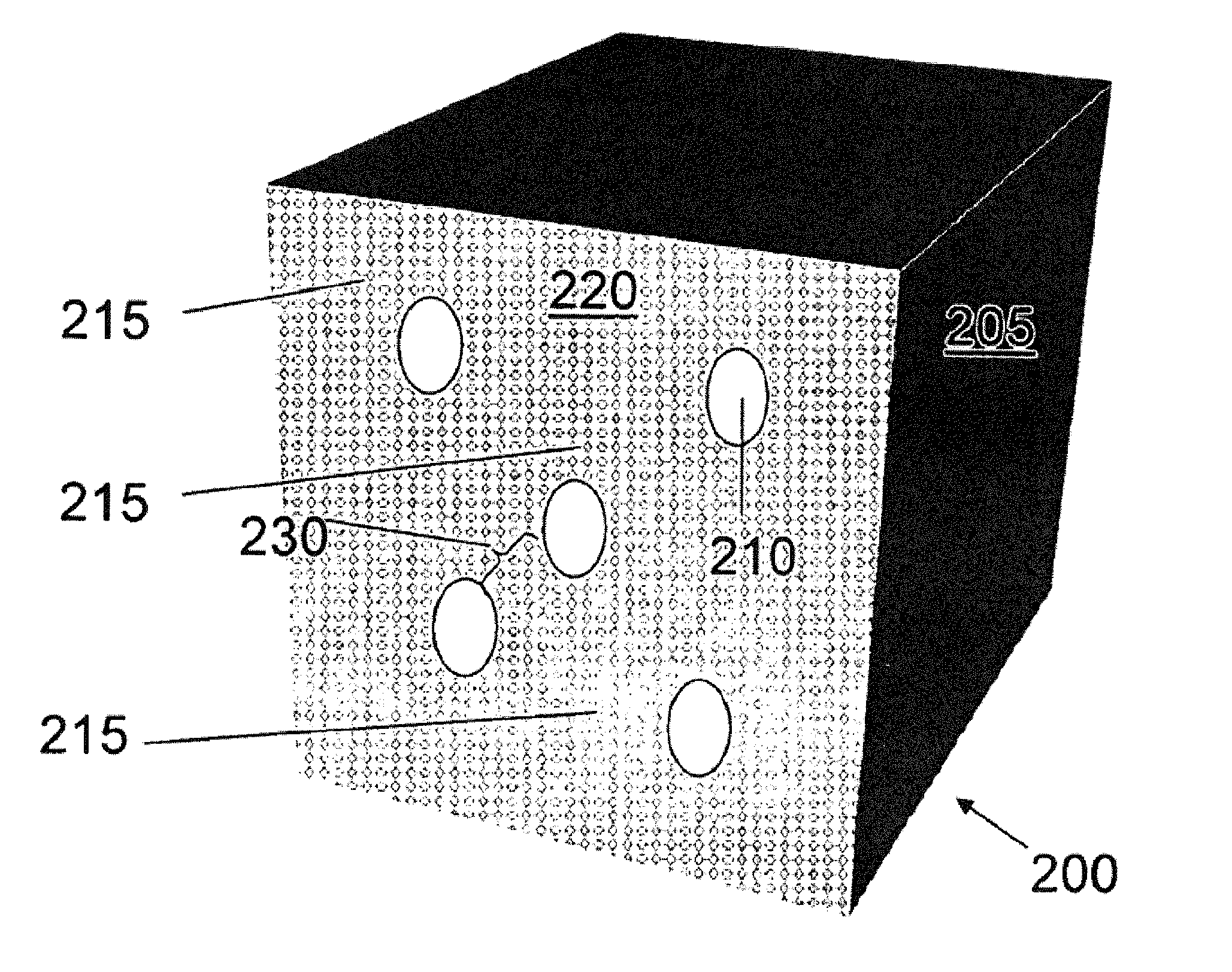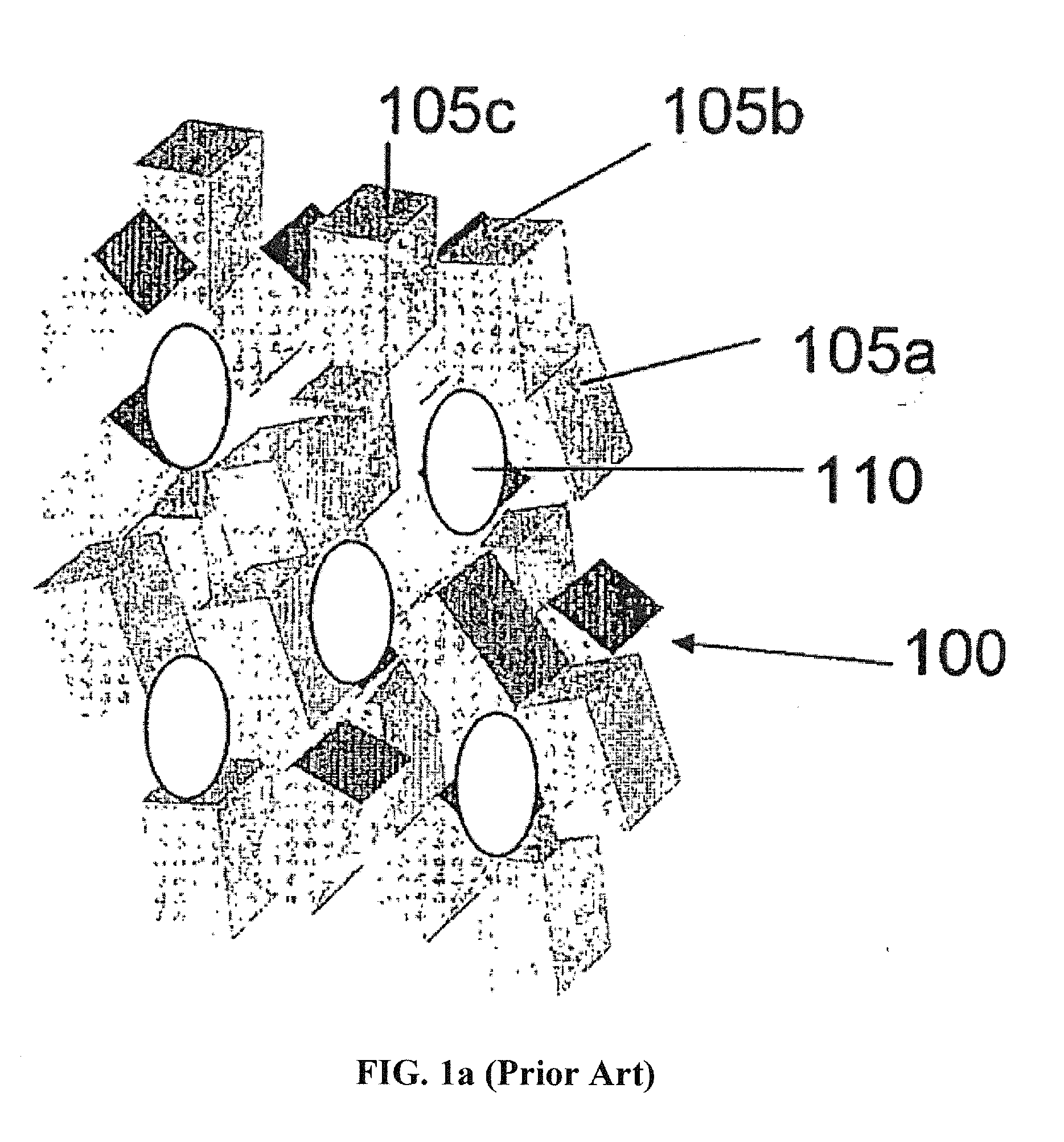Compositions and methods for making stabilized mesoporous materials
a technology of mesoporous materials and compositions, applied in the direction of crystalline aluminosilicate zeolites, aluminium compounds, faujasite aluminosilicate zeolite, etc., can solve the problems of high ion exchange capability, high hydrothermal stability, and inability to crystalline materials,
- Summary
- Abstract
- Description
- Claims
- Application Information
AI Technical Summary
Benefits of technology
Problems solved by technology
Method used
Image
Examples
example 1
Preparation of Heat-Treated Mesoporous Materials Under In Situ H2O / NH3 Atmospheres
[0212]Slurries of 75 g of NH4Y (CBV300, Zeolyst) in 300 g of de-ionized (“DI”) water were prepared in six identical beakers. Simultaneously, in six other beakers, different amounts of anhydrous citric acid (Fisher) were dissolved in DI water to form 10 percent solutions. The amounts used are shown in Table 1, below.
[0213]Each of the acid solutions was pumped at room temperature to a beaker containing NH4Y slurry over a period of 60 minutes while agitating (experiments #1-6). The solid phase of the slurry resulting from this acid wash was separated on a Buchner funnel from the liquid phase and washed with room-temperature DI water.
[0214]For each of the resulting six acid-washed cakes, 37.5 g of cetyltrimethylammonium bromide (“CTAB;” Dishman) were dissolved at 80° C. in 470 g of DI water. Each of the cakes, separated from their acid slurry, was dispersed in the hot CTAB solution. Then 140 mL of concentr...
example 2
Preparation of Heat-Treated Mesoporous Materials Under Ex Situ H2O / NH3 Atmospheres
[0218]Product numbers 7 through 13 in Table 2, below, were citric acid-treated and rived with CTAB and NH4OH using procedures similar to those described in Example 1. Variable amounts of citric acid were used during the pretreatment stage. However, the heat treatment stage was conducted differently than in Example 1. For elimination of CTAB, the samples were placed onto individual porous glass discs inside a glass chamber that was inside a muffle furnace. The inlet of the glass chamber was connected to a flask containing 10% of concentrated (29%) ammonium hydroxide and 90% of DI water. This H2O / NH3 solution was pumped into the heated furnace chamber and through the fitted disk and penetrated the compartment with the rived product. Product numbers 7, 8, 9, and 10 were calcined under H2O / NH3 atmosphere at 550° C. for 4 hours. Product numbers 11, 12, and 13 were calcined under H2O / NH3 atmosphere at 650° C...
PUM
 Login to View More
Login to View More Abstract
Description
Claims
Application Information
 Login to View More
Login to View More - R&D
- Intellectual Property
- Life Sciences
- Materials
- Tech Scout
- Unparalleled Data Quality
- Higher Quality Content
- 60% Fewer Hallucinations
Browse by: Latest US Patents, China's latest patents, Technical Efficacy Thesaurus, Application Domain, Technology Topic, Popular Technical Reports.
© 2025 PatSnap. All rights reserved.Legal|Privacy policy|Modern Slavery Act Transparency Statement|Sitemap|About US| Contact US: help@patsnap.com



